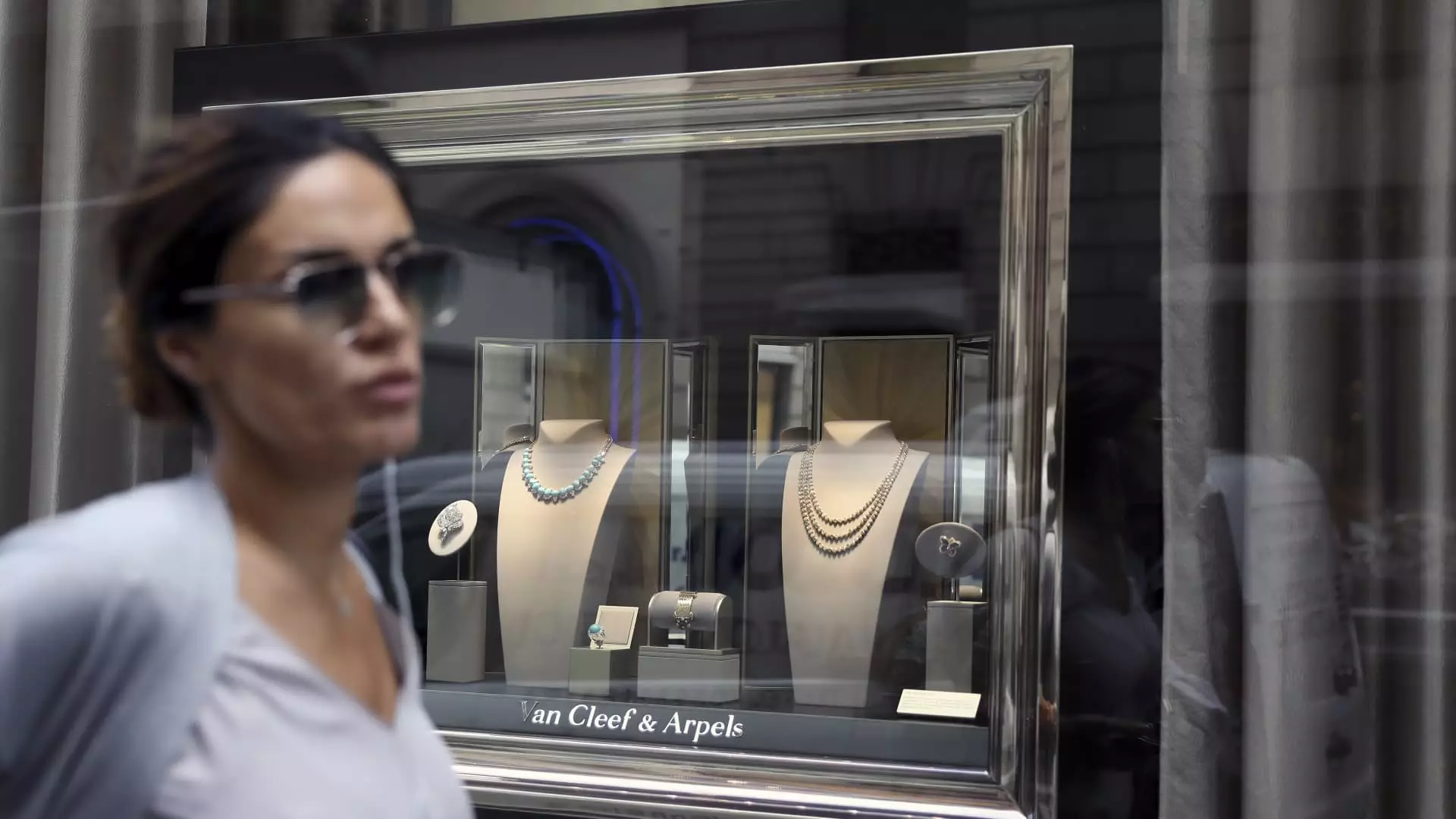In a world where ostentation often translates to power, the wealthy elite flaunt their affluence through exquisite jewelry. Despite a global trend where luxury shoppers are tightening their purse strings, the super-rich remain undeterred in their quest for the most luxurious adornments. It seems that diamonds and rare gemstones are not mere accessories; they represent status symbols that transcend the mere economics of supply and demand. While one mother-of-pearl bracelet may look like another to the untrained eye, the discerning wealthy know better. Herein lies the crux of the issue: as wealth becomes more concentrated, a clear divide emerges between what the very wealthy desire and what is made available to the average consumer.
Luxury market analysts have placed their bets on companies like Richemont to not only thrive but dominate amidst these shifting tides. Brands under the Richemont umbrella—such as Van Cleef & Arpels, Buccellati, and Cartier—are experiencing a renaissance, their products increasingly coveted by the affluent who reject anything less than the best. Analysts like Luca Solca, from Bernstein, illustrate that Richemont’s jewelry division is at the pinnacle of desirability. This isn’t just a byproduct of marketing; it’s a deep-seated cultural yearning for exclusivity. While others in the luxury market, including giants like LVMH, struggle to reclaim their footing, Richemont stands resilient, charting their course amid adversity.
The Disparity in Growth
In the latest fiscal report, Richemont showcased 11% growth in its Jewelry Maisons division, cementing their status as leaders in the luxury segment. However, it’s important to note that this success isn’t universally felt across the luxury spectrum. LVMH’s watch and jewelry division reported stagnant growth, indicating a concerning slowdown as a result of diminishing demand for key brands like Tiffany & Co. and Bvlgari. This divergence raises a fundamental question about the luxury market: who is truly benefiting, and at what cost?
While many brands are experiencing contractions due to economic uncertainties, the thriving performance of Jewelry Maisons suggests a growing preference for luxuries that can be acquired without the volatility associated with watches. In a post-pandemic world, where indulgence is both a salve for anxiety and a means of self-affirmation, jewelry’s relatively lower price point and the frequency of purchase may bolster its desirability. Those who can afford it are drawn to adorn themselves without the societal ramifications that may come with expensive timepieces. The luxury watch market, laden with prestige yet dense with supply, finds itself almost backward; its traditional allure has not translated effectively in these challenging times.
Market Reactions and Broader Implications
Despite Richemont’s success in jewelry, they are not entirely shielded from the headwinds buffeting the luxury market. The company has faced challenges within its Specialist Watchmakers division, where sales fell sharply—particularly in the volatile Chinese market. This points to a broader narrative about the luxury industry’s interconnectedness with global trade dynamics. From tariffs to fluctuating currency rates, the luxury sector is not immune to macroeconomic pressures that ripple through consumer behavior.
Investment sentiments are mixed. While there’s cautious optimism surrounding Richemont’s jewelry prowess, investment directors have warned of looming economic challenges. The appreciation of the Swiss franc against the dollar and surging gold prices will inevitably squeeze margins. Moreover, potential price hikes may alienate consumers seeking value, especially in luxury items amid inflationary pressures. The battle for market share among wealthy buyers is intense, and every fluctuation in the economic landscape could tilt the balance.
As luxury jewelry continues to shine brightly against the backdrop of a tumultuous market, the divide in consumer attitudes becomes increasingly pronounced. The wealthy elite remain steadfast in their pursuit of bold, glittering expressions of wealth—fueled by a culture that reveres exclusivity. With brands like Richemont capitalizing on this zealous demand, it is a paradox: while the luxury market as a whole may face contractions, the rarefied segments defined by exceptional quality and heritage thrive. This dynamic will undoubtedly shape the face of luxury in the coming years, raising questions about sustainability, accessibility, and the very nature of what it means to pursue “the best” in an increasingly polarized world.

